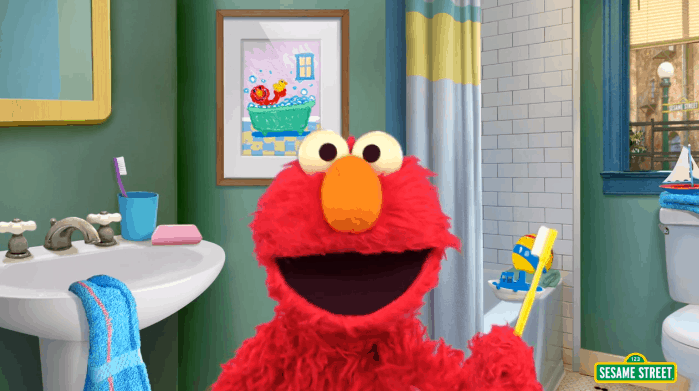This is a special feature that has been produced or updated for National Health Center Week (NHCW). NHCW brings awareness to the various challenges health centers and their patients face and recognizes that patient health starts at the heart of their communities.
The children’s health is essential to the overall well-being of our nation. According to the Children’s Health Fund (CHF), 20.3 million children in the United States face obstacles in receiving access to care. That is, around 28% of the nation’s children that are either uninsured, don’t receive sufficient primary care and who are insured but have needs unmet due to a lack of pediatric specialty care.¹
The barriers affecting children’s health care include financial and non-financial factors.
Financial:
- High copays
- High deductibles
- Unaffordable medication
- Unaccepted insurance plans
“CHF calculates that there are over 13.1 million children whose families report either having problems paying medical bills or being unable to pay medical bills.”¹
Non-Financial:
- Transportation barriers
- Health Professional Shortage Areas (HPSAs)
- Lack of information to parents
- Health illiteracy
Health Professional Shortage Areas are designated by the government. These areas suffer a lack of health professionals (primary providers, pediatricians and specialists) that result in unmet health care needs in a geographic area. “CHF estimates that over 14 million children live in HSPAs.”¹
Community Health Centers (CHCs) are key component to combating this issue. Health Centers serve more than 8 million children in the United States.² In addition, Medicaid works to ensure 33 million children that come from low-income households or need special care receive it. Families who don’t qualify for Medicaid can work with the Children’s Health Insurance Program (CHIP). CHIP provides health coverage for families whose incomes are too high for Medicaid but still cannot afford private health insurance.³
School-based health centers (SBHCs) also exist to ensure that equal care is available to all children.⁴ These centers create a convenient and affordable way for care to be delivered and to educate children on the importance of health.
Children have unique health care needs. Their health must be made a priority so they are able to live their lives to the fullest and thrive in the classroom. The COVID-19 pandemic has recently disrupted the lives of children across the United States. The Save the Children organization says that there are a plethora of other ways children’s lives can be upended by a health crisis, other than catching the disease in question. The following are some examples of how children’s lives, and therefore mental and physical wellbeing, can be affected during a pandemic:⁵
1. Increased risk from dependency
Children depend on parents or guardians to meet their basic needs, such as food and shelter. If that parent or guardians gets sick, quarantine measures and overall effects of the illness can leave some parents unable to provide their child to the fullest extent. More than 30 million children in the U.S. also depend on schools to provide them free meals throughout the day. With school closures, many children were abruptly left with a hunger issue.
2. Decreased parental supervision can lead to more abuse
Multiple factors, including psychological distress and the inability to provide attentive care, can leave children more exposed to violence, exploitation and abuse.
3. Resource disruptions can have a lasting impact
Many families have lost one or more sources of income during the pandemic due to layoffs and closures. This instability can be worsened by the need to pay for health care related expenses, which takes away spendable money for other necessities.
4. Education disruptions can lead to increased anxiety
Because children may have different perceptions of time than adults, a short period of time out of school may feel longer to them. This can cause them to worry that they may forget everything they have learned and not be able to catch up.
5. Lack of social interactions can impact emotional wellbeing
Social interaction with peers is fundamental to a child’s development. However, when social interaction is discouraged for long periods of time, children can begin to feel sad and lonely.
6. Pandemics can affect cultural norms
Some children may grow up in tight-knit family and friend circles, but disruptions caused by infectious diseases can affect a child’s protection and emotional wellbeing.
Children will be community leaders of the next generation. Certintell is committed to providing the next generation with the care they require through convenient services of telehealth.
OUR OBSERVATION: Children must be seen by a doctor regularly to focus and perform well in the classroom. The school-based health center model is an incredible tool for this, however, sometimes doctors are too busy to go off-site for the whole day to be in schools. Children who do have some form of insurance, whether privately or publicly, still face barriers when it comes to receiving the care they are covered for. Often times, this coverage does not meet all of their unique needs.
OUR SOLUTION: Certintell’s telehealth services are a great solution to this problem. Telehealth exists to overcome the barriers to health care that children face. By providing care through the means of technology, children and their families no longer have to find transportation or travel long distances to see a provider. Telehealth also works to lower the costs of care to make it affordable to all underserved populations. Certintell’s services align with plans such as Medicaid and CHIPl. Schools also have the opportunity to work with local Community Health Centers, and together, use tools that provide care to students via telehealth. Certintell works to close the care gap facing our nation’s children.
GET ACTIVE
Whether you’re a provider, parent or caregiver, NACHC has teamed up with Sesame Street in Communities (SSIC) to provide you with tools and resources to support the health, happiness and livelihood of kids.

Source: Sesame Street In Communities [Youtube]
SUPPORT SCHOOL-BASED HEALTH CENTERS
FREE RESOURCES TO SUPPORT CHILDREN’S DEVELOPMENT
➠ http://www.reachoutandread.org/resource-center/find-a-program/
SOCIAL SPOTLIGHT: National Day of Action + Children’s Health
This summer, NACHC has been active on social media, encouraging health centers, congresspeople and surrounding communities to recognize and highlight the value of community health centers. On June 17, the focus for National Day of Action was children’s health. Here are some of our favorite posts from the day:
Great to see all the activity around the importance of community health centers! Keep it up! If you haven’t, go to this link and send your message to member of Congress: https://t.co/xMOsP85GWJ #ValueCHCs pic.twitter.com/EvXm6Ingxj
— HCAdvocacy Network (@HCAdvocacy) June 17, 2020
8.7M kids are counting on YOU to take action for community health centers! Without emergency & long-term funding, services kids need to get and stay healthy are at risk. Can you spend five minutes telling Congress to #FundCHCs today? https://t.co/yfpt9n5nPp #valueCHCs pic.twitter.com/VM6R3iygPa
— Michigan Primary Care Association (@michpca) June 17, 2020
At Carevide, our heart is caring for our communities!
If you want to show your support for health centers like Carevide you can take action here: https://t.co/Rp9FmJjGb3#ValueCHCs #FundCHCs #TakeAction #CarevideCares@HCAdvocacy @JohnCornyn @tedcruz @NACHC @TexasCHCs pic.twitter.com/IV0hobMEQi
— Carevide (@carevide) June 17, 2020
This article was first featured as a part of Certintell’s 2019 National Health Center Week efforts to support the awareness, advocacy and celebration of Community Health Centers during the annual week-long event. The original content has been expanded to provide more value to the reader.
¹ “20 Million Children Lack Sufficient Access to Health Care – PNHP.” PNHP, Nov. 2016, pnhp.org/news/20-million-children-lack-sufficient-access-to-health-care.
² “Saturday, 8/10 – Children’s Health Day.” National Health Center Week, 9 May. 2017, healthcenterweek.org/childrens-health
³ “Policy Basics: Introduction to Medicaid.” Center on Budget and Policy Priorities, 16 Aug. 2019, www.cbpp.org/research/health/policy-basics-introduction-to-medicaid.
⁴ “Alliance, School-Based Health. “About School-Based Health Care | School-Based Health Alliance About School-Based Health Care | Redefining Health for Kids and Teens.” 23 July 2019, www.sbh4all.org/school-health-care/aboutsbhcs.
⁵ “6 Ways Coronavirus Can Affect Kids, Even If They Don’t Get Sick.” Save the Children, 2020, www.savethechildren.org/us/what-we-do/emergency-response/coronavirus-outbreak/ways-children-are-at-risk-in-a-health-crisis.



